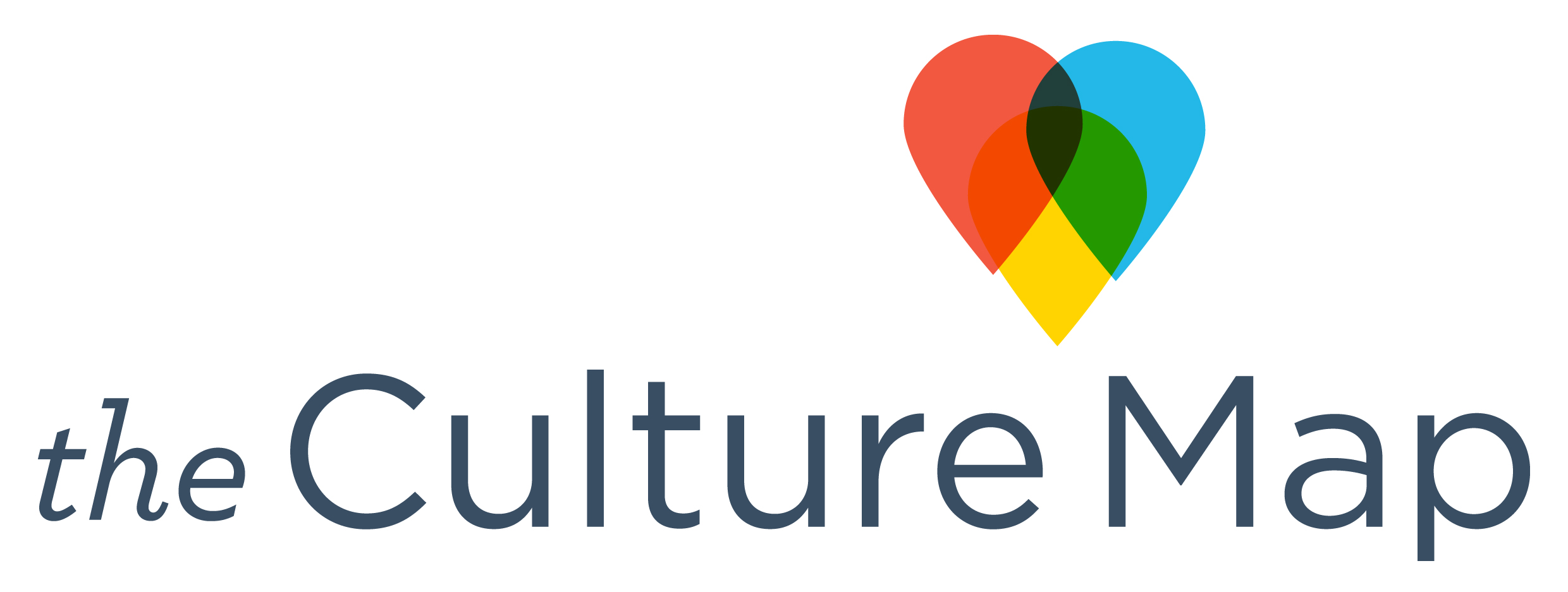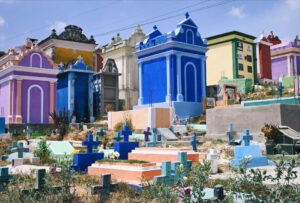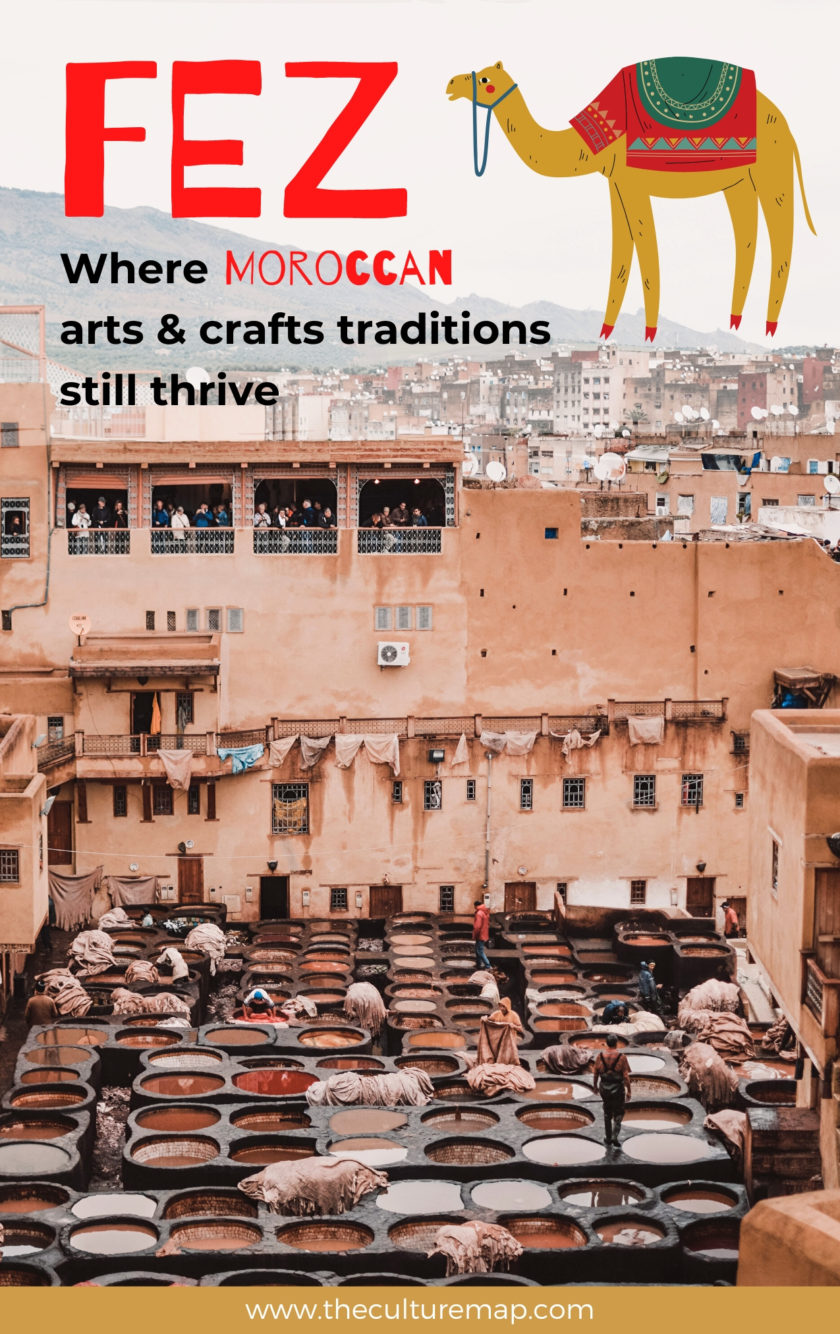
Morocco is rich with age-old traditions, some that are becoming lost in a world where we favour speed and technology.
In Morocco today, you will still see artisans who follow the methods that have been passed down through countless generations to create a wide range of exquisite crafts and arts. Many of these skills and techniques were born in Fez, the former imperial city of Morocco.
During my recent trip to Fez, I was blown away by the craftsmanship that’s involved in keeping the country’s unique arts and crafts traditions alive.
Here are some of them:
Mosaics and tile work
You can learn so much about Morocco through its beautiful tile work known as zellige. The birth of Moroccan tiles hail from Fez but it was introduced to the area by Moors fleeing Andalusia which is why you’ll see many similarities in the buildings in Granada, Córdoba and Seville.
I visited a pottery workshop called Art D’Argile to see where the magic happens. Seeing the craftsmanship that pours into this kind of highly skilled work first-hand, made me really appreciate the dedication they have given to honing their craft.

I watched in awe as these artisans chiselled away to create geometric patterns with machine-like precision.
Once enough shapes had been made from a myriad of colours, the craftsmen then pieced them together to form exquisite mosaic patterns. The kind of detail and precision that they had achieved were akin to that of a laser-cutter.

This skill has been developed and kept alive in Fez since the 14th century. Initially the tiles were naturally pale grey but the artisans began to introduce colours to the clay once they were discovered. There are numerous examples of decorative zellige around Fez, especially in religious sites and in the former homes of wealthy citizens – perhaps none more than Dar al Makhzen, also known as the Royal Palace.

Pottery - the old school way
Pottery production has been a major industry in Fez for hundreds of years. I was also able to witness how it’s made at Art D’Argile. Using clay that had been gathered from the local area, it is then brought to the workshop so it can be beautifully transformed.
As I watched the potter at work, I was super surprised to see that he was operating the wheel manually with his foot. My brother, who I was travelling with, had recently taken a pottery class in London and he learnt on an electric wheel which is how most people nowadays create pottery.

The electric wheel is easier because you don’t have to coordinate your foot with your hands as much, and in general a kick-start wheel is harder to master. Though once you get the knack of it, you’re said to be more connected with the clay, and others add the traditional way is more romantic too (Demi Moore and Patrick Swayze, anyone?).
Once the pottery has been skilfully moulded into its desired shape – usually a plate, bowl, vase or tagine – it’s then left in the sun to dry, before being painted, and fired in a kiln. Along with the cities of Meknes and Safi, Fez remains responsible for around a whopping 80% of the country’s pottery production.
The city’s pottery is known for its blue and white colours, specifically cobalt blue, which is the hallmark of Fez pottery. Once it’s been taken out of the kiln and the properties have oxidised, the blue colour intensifies.
Designs typically feature motifs and patterns including flowers, zigzags, chevrons, dots, triangles and crosshatching, all of which are used to convey messages. For example, diamond or star-shaped lozenge motifs represent an eye that deflects evil, while a shape with five points or branches conjures the protection of the hamsa, or hand of Fatima.
The Tannery & leather goods
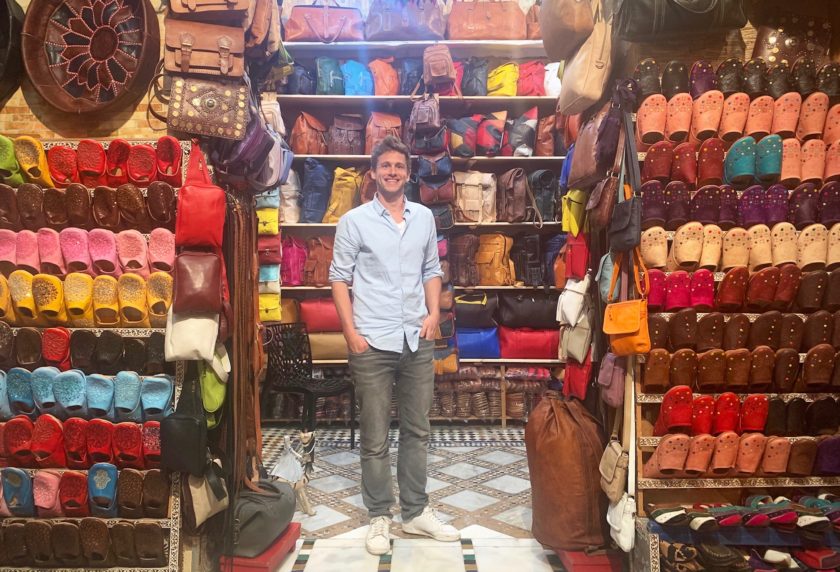
Leather is synonymous with Morocco, you can’t go anywhere without seeing it, and some might say, smell it first.
Located within the maze of the medina, Chouara Tannery is the city’s biggest tannery and one of its most iconic attractions. It’s something you really have to see for yourself. To do this, you need to walk through one of the leather shops, each of which has a terrace overlooking Chouara.
As we headed up, we were given a small bunch of mint leaves that we were advised to plough up our nostrils to help cancel out the smell of the tannery. And oh boy, did we need it!
The stone vessels below me looked like less a factory floor and more like an artist’s watercolour palette on a huge scale. Each vessel is filled with dye or white liquids and there’s enough room in them to fit in at least one fully grown man and tens of cow hide.
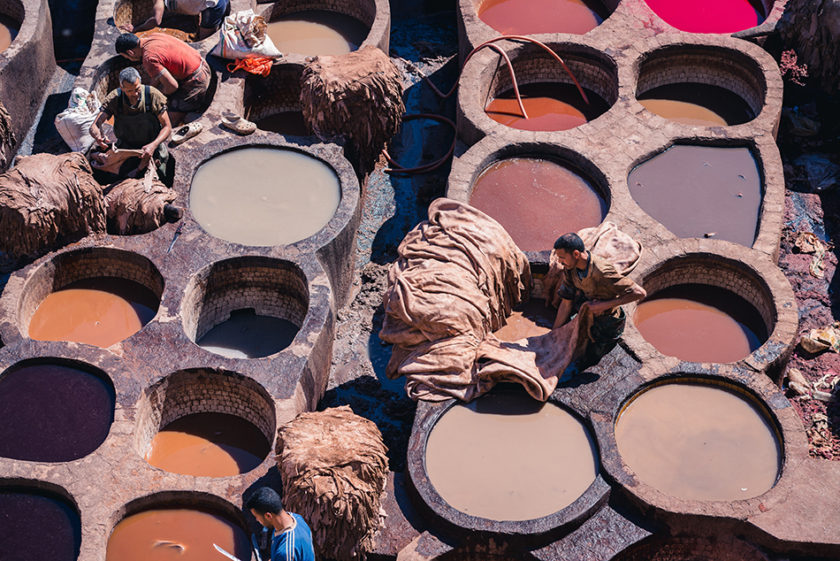
Hides of cows, sheep, goats, and camels are processed by first soaking it in the white liquids. The liquid is made from a mixture of substances, including – and get this – cow urine and pigeon poo. This explains why the tannery smells so bad! But these pongy ingredients play a vital role in softening the leather.
This process takes two to three days and prepares the hides to readily absorb the dyes. They are then soaked in the dyeing solutions, which use natural colorants such as poppy for red, indigo for blue, and henna for orange. After the dyeing, they are dried under the sun before being made into the desired goods you see all over Morocco.
To get this insight into how leather and these other artisanal products are traditionally made is both fascinating and visually different from anything else I’ve ever seen. It’s what makes visiting Fez so special.
Where to stay in Fez
Staying in the heart of the Medina (Old Town) allows you to immerse yourself in Fez’s ancient charm. Many riads, traditional Moroccan guesthouses with inner courtyards, are located here, offering an authentic experience. You’ll be within walking distance of historic sites like the Al-Qarawiyyin Mosque located within the bustling souks.
If you’re looking for somewhere to little bit quieter and calm, you could also stay just outside the Medina. Places such as Batha and Bab Boujloud are close to the medina but offer a slightly quieter atmosphere. You’ll find a mix of riads and mid-range hotels, providing easy access to both the medina and modern conveniences.
I stayed at Dar Fes Medina Ziat located within the walled Medina (Old Town). The property is really beautiful, showcasing a stunning array of lovely mosaic tiles and woodwork. I couldn’t fault the hospitality either. Every time I had a question, or wanted anything they were always happy to help.
The location is approximately 10-minutes walk to the main souk, so if you’re happy to walk a little longer than somewhere slap-bang in the middle of everywhere, I’d definitely recommend staying here.
